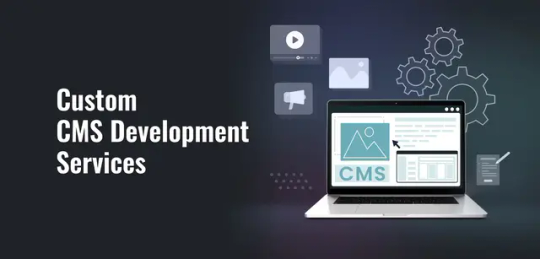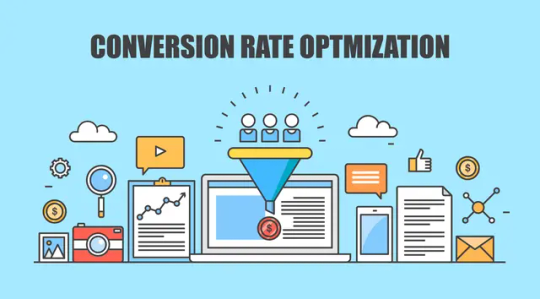Don't wanna be here? Send us removal request.
Text
Web Design Essentials Every Startup Needs to Know

Launching a startup? Then your website isn’t just a digital placeholder - it’s your first impression, your credibility marker, and often, your primary tool for lead generation. With competition growing across industries, the need for a professional, functional, and conversion-focused website has become more important than ever. This guide covers the essential aspects of web design for startups to help your business establish a strong online presence right from day one.
1. Prioritize Mobile Optimization from the Start
With the majority of web traffic coming from smartphones, designing your site to perform well on mobile devices is no longer optional. A mobile-first layout means the design process begins with smaller screens in mind, ensuring content, navigation, and features work flawlessly on phones before scaling up to desktops.
Search engines reward mobile-optimized sites with better rankings, making it vital for both user engagement and search visibility. To deliver a smooth experience across all screen sizes, developers should rely on adaptive design systems like Tailwind CSS or Bootstrap, which automatically adjust elements based on device type.
2. Choose Simplicity and Speed Over Complexity
New businesses sometimes overload their sites with visuals, slideshows, or large blocks of text -which can confuse or distract visitors. In contrast, a simple and speedy design creates a smoother experience and helps users focus on what matters most.
Follow these smart design strategies:
Leave breathing room around text and elements to improve clarity.
Reduce file sizes for photos to ensure fast page loading.
Apply a steady color scheme that matches your visual identity.
A well-organized layout that avoids clutter not only feels modern but also drives better results. For startups looking to make a strong online impact, clear and fast-loading websites are far more effective than overdesigned ones.
3. Lay a Strong Foundation for Search Engine Success
Your site’s visual appeal won’t matter if it remains invisible to your target audience. That’s why integrating search readiness during development is critical. A site crafted with search visibility in mind gains better traction in search engine results and attracts more organic visitors.
To boost discoverability:
Apply a clear and logical hierarchy to your titles and subtitles.
Minimize delays by ensuring pages load quickly.
Design layouts that adapt well to smartphones and tablets.
Add image descriptions to support indexing and accessibility.
Keep the site code well-structured and easy for search bots to navigate.
Thoughtfully inserting relevant key terms, such as “web design for startups,” into page titles, descriptions, and web addresses helps your site appear in searches your audience is already making.
4. Deliver a Seamless and Intuitive Browsing Experience
Creating a website that’s visually appealing is just one part of the equation- it must also be effortless to use. Visitors should be able to move through your pages smoothly, locate what they need fast, and engage with your content without any guesswork. That’s the essence of a well-crafted user experience (UX).
To enhance usability, consider:
Buttons that clearly guide users toward taking the next step.
Menus designed with logical flow and easy navigation.
Prominent placement of key sections like your “About,” “Services,” and “Contact” pages.
When startups prioritize a user-first approach, they not only reduce friction but also create a lasting impression-helping to build trust and increase conversions.
5. Tell Your Startup Story
Startups thrive on authenticity and connection. Your website should tell your brand’s story clearly and compellingly. Use your “About Us” page to explain your mission, values, and team. Avoid stock photos and instead use real images to build trust.
This human touch resonates well with visitors and encourages deeper engagement with your brand.
6. Use Analytics and Tracking Tools
To grow effectively, you need to measure how users interact with your site. That’s why integrating analytics tools is essential for startups.
Recommended tools include:
Google Analytics
Google Search Console
Hotjar or Microsoft Clarity (for heatmaps)
Facebook Pixel
These tools provide actionable insights like bounce rates, session durations, and conversion paths. With the right data, you can continuously refine your design for better performance.
7. Strengthen Both Local Presence and Global Accessibility
Whether you're targeting customers nearby or users across the globe, your site must support broad and location-specific discoverability. Begin by clearly displaying your business address, contact number, and an easy-to-use form for inquiries. Incorporating tools like live chat or WhatsApp helps create real-time communication, boosting customer confidence.
To improve local exposure, register your company with map services and reputable local listings. For better search engine performance, implement structured data markup, which helps search platforms present your content in enhanced formats- increasing both your visibility and chances of getting clicks.
By fine-tuning your site for both local and international users, your startup positions itself for maximum reach and sustained digital growth.
The strength of your startup’s online presence can directly influence its growth. A well-planned website works silently in the background capturing attention, guiding users, and turning interest into action. By applying the right design principles early on, you create a reliable base for future digital success.
If you're aiming for polished results, it’s wise to collaborate with a reliable web design expert. A knowledgeable team can translate your ideas into a responsive, search-friendly site that reflects your brand and drives meaningful results.
0 notes
Text
Why Responsive Website Development Matters for Businesses in 2025

In today’s tech-driven world, a business without a strong online presence risks falling behind. But simply being online isn't enough. With users accessing websites through a wide range of devicessuch as smartphones, tablets, laptops, and even smart TVsit’s crucial that websites work flawlessly across all screen sizes. This is where responsive website development becomes a key factor.
In this post, we’ll break down what responsive design means, explore its growing importance in 2025, and highlight how it can give businesses a competitive edge in the digital marketplace.
What Is Responsive Website Development?
Responsive website development involves building websites that automatically reshape and adjust based on the screen size and device being used. Whether someone accesses the site on a smartphone, tablet, or desktop, the content should display clearly, remain easy to navigate, and provide a consistent user experience.
This is achieved by implementing adaptable grid systems, flexible images, and CSS media queries that tailor the design layout to each screen. Instead of creating different versions of a website for various devices, a responsive design ensures one site performs well across all platforms, making it more efficient and accessible.
Rising Mobile Browsing and Why Responsive Design Matters
As smartphones become the preferred method for accessing the internet, more users are visiting websites on compact screens rather than on desktop computers. This shift makes it vital for companies to ensure their websites display and function smoothly on mobile devices. Without mobile-friendly design, sites may appear cluttered, load improperly, or be difficult to navigate causing visitors to leave quickly.
Responsive design resolves these issues by dynamically adjusting the website’s layout to fit various screen dimensions. This creates a user-friendly experience, encouraging visitors to explore more and engage with the content, which can lead to higher conversions and sales.
Key Advantages of Responsive Web Design
Superior User Experience Websites that adapt fluidly to various devices offer a more seamless and comfortable experience. Visitors find it easier to browse, read without needing to zoom, and access menus smoothly, which encourages them to stay longer and explore more content.
Enhanced Search Engine Rankings Sites optimized for mobile devices are favored by search engines. Responsive design aligns with Google’s mobile-first indexing, helping your site rank higher and attract increased organic traffic.
Better Conversion Opportunities A site that functions well on all devices makes it easier for visitors to take meaningful actions like joining a mailing list, filling out a contact form, or completing a purchase. By offering a smooth and accessible experience, responsive websites keep users engaged and help lower the chances of them leaving quickly.
Enhanced Speed Across Devices Responsive design focuses on efficient performance, allowing pages to load quickly whether on phones, tablets, or desktops. Fast-loading content meets user expectations, encourages continued browsing, and improves overall satisfaction.
Key Elements of a Responsive Website
To achieve full responsiveness, a website should include:
Flexible grids and layouts: Content sections adjust based on screen dimensions.
Scalable images: Images resize appropriately without distortion or overflow.
Responsive typography: Text remains readable and well-aligned on all screens.
Adaptive navigation: Menus convert into mobile-friendly formats like hamburger menus.
Device testing: The site should be tested across multiple browsers and screen sizes before launch.
Real-World Business Impact
Consider a business that updates its outdated static website to a responsive format. After the redesign, the site begins to perform better on search engines. Mobile users can easily find products or services, leading to a significant increase in traffic. Over time, this results in more leads, better customer retention, and increased sales.
Such examples show how technical improvements like responsiveness can directly impact a company’s bottom line.
Future-Proofing Your Website
With the constant evolution of digital devices like smartwatches, foldable screens, and voice-controlled browsers it's essential for websites to be adaptable. A responsive design allows your site to function well across both current and emerging technologies without the need for major overhauls. By choosing a responsive approach, you're setting your website up for long-term success keeping it accessible, modern, and competitive in an ever-changing digital world.
Responsive website development is no longer just a design trend it's a necessity. It enhances user experience, improves search visibility, and leads to higher engagement. It’s a smart investment for businesses that want to grow and stay visible in today’s mobile-first world.
If you're planning to upgrade your online presence or build a new website that works flawlessly across all devices, SoftLoom Responsive Website Development offers expert solutions tailored to meet modern business needs. A responsive website can make all the difference and the time to act is now.
0 notes
Text
Exploring Attendance Management Modules in College ERP
Technology is now the foundation of effective administrative procedures in the rapidly changing educational scene of today. One such transformative tool is College ERP (Enterprise Resource Planning) systems, designed to streamline various academic and administrative functions. Among its many features, the Attendance Management Module stands out for its role in simplifying and optimizing attendance tracking.

Let’s dive deeper into what makes this module a game-changer for educational institutions.
Key Features of Attendance Management Modules
Attendance management modules in College ERP systems come packed with innovative features designed to address the unique challenges of attendance tracking:
Automated Attendance Tracking: Gone are the days of manual roll calls and registers. With features like RFID, biometric systems, and QR code scanning, attendance tracking has never been easier. These methods not only save time but also eliminate the scope for human error.
Real-Time Updates and Notifications: Parents and administrators can now stay updated in real-time about a student’s attendance. Irregular patterns trigger automated alerts, helping stakeholders intervene promptly when necessary.
Comprehensive Reporting and Analytics: Visual dashboards and detailed reports allow educators and administrators to monitor trends effectively. Whether it’s analyzing attendance for an individual student or an entire department, these insights are invaluable for decision-making.
Customizable Attendance Policies: Every institution has unique requirements. ERP systems allow you to set custom rules for attendance thresholds, grace periods, and scheduling to align with institutional policies.
Integration with Other ERP Modules: Attendance data doesn’t exist in isolation. These modules seamlessly integrate with academic, examination, and fee management systems, ensuring a holistic approach to student management.
Advantages of Attendance Management Modules
The shift to automated attendance management brings a host of benefits:
Time and Resource Efficiency: Manual processes are time-consuming and prone to errors. Automation frees up valuable resources for more meaningful tasks.
Transparency and Accountability: With easily accessible records, stakeholders enjoy complete transparency, reducing disputes and errors.
Improved Academic Performance: By identifying attendance patterns early, institutions can intervene to address absenteeism, improving overall student outcomes.
Remote and Hybrid Learning Compatibility: With the rise of online learning, ERP systems provide robust solutions for tracking attendance in virtual classrooms.
Real-Life Impact: A Case Study
Consider XYZ College, which implemented an advanced ERP attendance module. Within the first semester:
Absenteeism dropped by 20%.
Parental engagement increased significantly due to real-time alerts.
Administrators reported a 50% reduction in time spent on attendance-related tasks.
Challenges in Implementation
While the benefits are immense, implementing an attendance management module is not without its challenges:
Initial Resistance: Both staff and students may need time to adapt to the new system.
Cost Considerations: Advanced systems require investment, but the long-term ROI justifies the cost.
Data Security: Institutions must ensure compliance with data privacy laws to protect sensitive information.
Future Trends in Attendance Management
The future of attendance management is bright, with several exciting advancements on the horizon:
AI and Predictive Analytics: Imagine a system that identifies at-risk students based on attendance trends, enabling early interventions.
IoT Integration: Smart devices and sensors could take attendance tracking to the next level.
Blockchain for Data Integrity: Secure and tamper-proof attendance records will soon become the norm, ensuring credibility and compliance.
Conclusion
The Attendance Management Module in College ERP for Attendance systems is not just a tool, it’s a powerful catalyst for change in educational administration. By automating repetitive tasks, delivering valuable insights, and ensuring complete transparency, these systems streamline attendance processes. With College ERP for Attendance, institutions can focus on their core mission: delivering quality education while fostering accountability and efficiency.
0 notes
Text
Building a Scalable Website: The Role of Custom CMS Development
Introduction
In the fast-paced digital era, a website isn’t just an online presence, it’s the cornerstone of a business’s growth strategy. However, as businesses grow, so do their demands for functionality, user experience, and performance. This is where scalability becomes essential. A scalable website ensures that your digital platform can handle increasing traffic, content, and integrations without compromising performance. Custom CMS (Content Management System) development plays a crucial role in enabling this scalability. In this blog, we’ll explore how a custom CMS can be the key to building a robust, scalable website that evolves with your business needs.

Understanding Website Scalability
Scalability refers to a website's ability to accommodate growth, whether it’s an increase in user traffic, expanding content libraries, or integrating new functionalities. A scalable website ensures consistent performance even under heavy loads, minimizing downtime and enhancing user experience.
Why Choose Custom CMS for Scalability?
Instead of off-the-shelf CMS platforms, custom CMS systems are made to your exact specifications and provide unmatched flexibility and control. This bespoke approach ensures your website infrastructure can scale seamlessly as your business grows.
Key Roles of Custom CMS in Building Scalable Websites
Flexible Architecture: Custom CMS platforms are designed with a modular architecture, enabling you to add new features or functionalities without disrupting the existing framework. Whether you’re integrating e-commerce capabilities or adding multilingual support, a custom CMS ensures scalability without compromising performance.
Optimized Performance: As your website scales, performance optimization becomes critical. Custom CMS solutions allow developers to fine-tune code, databases, and server configurations to ensure fast load times and seamless user experiences, even during traffic spikes.
Advanced Content Management: A growing website often means managing vast amounts of content. Custom CMS platforms streamline content workflows, offering features like bulk uploads, advanced categorization, and automated scheduling to handle expanding content libraries efficiently.
Seamless Integrations: As businesses grow, they often need to integrate third-party tools such as CRM systems, analytics platforms, and marketing automation tools. Custom CMS solutions are built to support seamless integrations, ensuring that your website scales in sync with your business operations.
Enhanced Security: Growth often attracts more security threats, making robust protection essential. A custom CMS offers advanced security measures tailored to your website’s needs, such as custom firewalls, encryption protocols, and regular vulnerability assessments, ensuring scalability doesn’t compromise safety.
Support for Multi-Site Management: For businesses expanding into new markets or launching sub-brands, multi-site management becomes a necessity. A custom CMS allows for the creation and management of multiple websites under a unified backend, streamlining operations and maintaining brand consistency.
Future-Ready Development: Custom CMS platforms are built with the future in mind. By leveraging technologies like headless CMS architecture, they enable businesses to scale across multiple channels—websites, mobile apps, IoT devices, and more—ensuring adaptability in an ever-evolving digital landscape.
Real-Life Example: Custom CMS in Action
Consider an e-commerce website experiencing rapid growth in both traffic and product inventory. If the website has a custom CMS, it can:
Scale its database to accommodate millions of product listings.
Implement AI-driven search functionality for better user experience.
Integrate seamlessly with logistics and payment gateways.
This tailored approach ensures that the business can handle growth without interruptions.
Conclusion
Building a scalable website is no longer a luxury, it’s a necessity for businesses aiming for sustainable growth. Custom CMS website development offers the flexibility, performance optimization, and future-proof capabilities needed to support your website as it evolves. By investing in a custom CMS website development services, businesses can not only meet today’s demands but also be prepared for tomorrow’s challenges. Whether you’re planning for increased traffic, expanding content, or integrating cutting-edge technologies, custom CMS development is the foundation for a scalable, successful website.
1 note
·
View note
Text
Typical Errors to Avoid When Developing Responsive Websites
Introduction
Responsive web development is no longer optional—it's a necessity in today’s mobile-first digital landscape. With a growing number of users accessing websites from a variety of devices and screen sizes, creating a responsive website ensures that your audience enjoys a seamless and engaging experience. However, many developers and designers encounter common pitfalls that can hinder the effectiveness of responsive websites. From neglecting mobile-first principles to poor optimization practices, these mistakes can impact usability, performance, and even SEO. This guide explores the most common mistakes in responsive web development and how to avoid them to create websites that perform flawlessly across all devices.

1. Ignoring the Mobile-First Approach
One of the foundational principles of responsive web design is prioritizing mobile users. For mobile users, designing for desktops first and then adjusting for smaller devices can lead to a cumbersome and less-than-ideal experience. How to Avoid: Start your design process with mobile devices in mind, focusing on core content and functionality. To scale up for larger screens, use progressive enhancement.
2. Overlooking Proper Testing
A common mistake is assuming a design works well without thorough testing. This can lead to broken layouts, misaligned elements, or inaccessible features on certain devices or browsers.
How to Avoid: Regularly test your website on a wide range of devices, screen resolutions, and browsers. Tools like BrowserStack, Responsinator, and Google Chrome’s Developer Tools can help you simulate and troubleshoot issues effectively.
3. Using Fixed Widths for Layouts
Fixed-width layouts lack flexibility, causing designs to break on devices with varying screen sizes. This limits adaptability and creates a poor user experience.
How to Avoid: Use a fluid grid system with percentage-based widths and relative units like em or rem. This ensures your layouts can adapt dynamically to any screen size.
4. Neglecting Image Optimization
Large, unoptimized images can significantly slow down website loading times, particularly on mobile networks, resulting in a frustrating user experience.
How to Avoid: Use responsive image techniques like the srcset attribute to serve appropriately sized images for different devices. Compress images using tools like TinyPNG or ImageOptim, and consider using modern formats like WebP for better performance.
5. Designing Non-Touch-Friendly Elements
Many websites are designed with clickable elements that are too small or placed too close together, making it difficult for users on touchscreens to interact effectively.
How to Avoid: Follow touch-friendly design principles by ensuring buttons and links are appropriately sized (minimum 48px by 48px) and well-spaced.To guarantee usability, test touch interactions across a range of devices.
6. Poor Implementation of Media Queries
Media queries are a cornerstone of responsive web design, but misusing them can lead to bloated CSS files and inefficient designs.
How to Avoid: Plan breakpoints based on content, not specific devices. Write mobile-first media queries and group-related styles to maintain clean and manageable code.
7. Overcomplicating Navigation
Complex desktop navigation menus often don’t translate well to smaller screens, leading to usability issues.
How to Avoid: Simplify your navigation for smaller devices by using collapsible menus, hamburger icons, or single-level dropdowns. Prioritize essential menu items and ensure ease of use.
8. Forgetting About Performance Optimization
Unoptimized websites can suffer from slow loading times, particularly on mobile devices with limited bandwidth, negatively impacting user experience and search engine rankings.
How to Avoid: Optimize your website by minimizing CSS and JavaScript files, using lazy loading for images, and leveraging browser caching. With the use of technologies like Google PageSpeed Insights, areas that require work can be identified.
9. Skipping Accessibility Considerations
Responsive design must also cater to users with disabilities. Ignoring accessibility standards can alienate a significant audience and lead to legal issues.
How to Avoid: Follow the Web Content Accessibility Guidelines (WCAG) by ensuring proper colour contrast, keyboard navigation, and support for screen readers. Test your website’s accessibility using tools like Wave or Axe DevTools.
10. Overlooking Typography Scalability
Using fixed font sizes can result in text that’s difficult to read on smaller or larger screens, hampering user engagement.
How to Avoid: Use scalable typography with relative units like em or rem. To ensure readability on all platforms, use media queries to change the font size for various screen sizes.
Conclusion
Responsive web development is essential for delivering a seamless, user-friendly experience across devices, but even small mistakes can lead to significant drawbacks. By adopting a mobile-first approach, optimizing performance, and paying close attention to accessibility and usability, developers can create responsive websites that cater to diverse audiences and perform exceptionally well. Avoiding these common mistakes will not only improve user satisfaction but also enhance your website’s SEO and conversion rates, ensuring success in today’s competitive digital landscape.
0 notes
Text
Key Benefits of HTTPS for Both SEO and User Engagement
Nowadays, website security isn't just a best practice - it's essential. One of the most important elements in ensuring website security and fostering trust with your audience is HTTPS (Hypertext Transfer Protocol Secure). While HTTPS has long been a vital factor for secure data transmission, its role in search engine optimization (SEO) and user engagement has become even more critical in recent years. Let’s dive into the key benefits of HTTPS and explore how it directly impacts both your SEO rankings and user experience.

What Is HTTPS?
Before we explore the benefits, let’s quickly clarify what HTTPS is. HTTPS is the secure version of HTTP, the protocol used for transmitting data over the internet. When a website uses HTTPS, all communication between the user's browser and the website is encrypted using SSL (Secure Sockets Layer) or TLS (Transport Layer Security). This encryption ensures that sensitive information, such as personal data or payment details, is transmitted securely and cannot be intercepted by hackers.
1. Improved SEO Rankings
Google has made it clear that HTTPS is a ranking factor in its algorithm. While it is considered a “lightweight” ranking signal compared to other factors like content quality or backlinks, it still plays a role in improving your website's position in search results. Websites with HTTPS are more likely to rank higher than their HTTP counterparts, giving them a competitive edge. Google’s emphasis on HTTPS has only grown stronger over time, as it continuously works to prioritize user safety and data protection.

2. Enhanced User Trust and Credibility
User trust is a key component of successful online engagement. The presence of HTTPS on your site is visually indicated by the small padlock icon in the browser’s address bar. This simple icon reassures visitors that their data is secure, which is especially important when they are asked to provide personal or financial information.
When users trust your website, they are more likely to stay longer, explore more pages, and convert (whether it’s signing up for a newsletter or completing a purchase). If your website lacks HTTPS, modern browsers like Google Chrome will label it as “Not Secure,” which could lead to users bouncing off your site immediately.
3. Reduced Bounce Rates and Improved Dwell Time
The presence of HTTPS can also directly affect user behavior on your website. Websites that appear secure are more likely to be trusted by visitors, encouraging them to interact with the content and stay longer.
When users trust your website, they are more likely to engage with your content, browse through different pages, and make purchases. This can lead to a reduction in bounce rates (the percentage of visitors who leave your website after viewing only one page) and an increase in dwell time (the amount of time visitors spend on your site). Both of these user experience metrics indirectly influence SEO rankings.
4. Better Page Load Speed with HTTP/2 Support
HTTPS and performance improvements go hand in hand, especially when it comes to the latest web technologies. Websites using HTTPS can take advantage of HTTP/2, a newer protocol that speeds up page load times by enabling multiple requests to be sent at once. Faster websites not only provide better user experiences but are also favored by search engines like Google.
Google has long emphasized the importance of fast-loading websites, and studies have shown that even a one-second delay in page load time can result in a significant drop in conversions. By adopting HTTPS, you are ensuring that your website is optimized for speed, which is a crucial factor for both user engagement and SEO.
5. Secure Referrer Data for Improved Analytics
Another benefit of HTTPS is its ability to preserve referral data. When users navigate from one HTTPS site to another, the referrer information is retained and passed on securely, allowing you to track the source of your traffic more accurately.
On the other hand, if your site uses HTTP, referrer data is lost, and traffic is classified as “direct” in your analytics tools. This can make it harder to assess the effectiveness of your marketing campaigns or understand where your website traffic is coming from.
With HTTPS, you get more accurate data in Google Analytics, which can help you refine your SEO strategy and enhance user engagement efforts.
6. Enhanced Mobile Experience and AMP Support

With mobile-first indexing becoming a priority for Google, ensuring that your website is optimized for mobile users is more important than ever. HTTPS is essential for mobile optimization, especially if you're using Accelerated Mobile Pages (AMP). AMP is a framework designed to deliver fast-loading, mobile-friendly pages, and it requires HTTPS to function.
If your website is HTTPS-enabled, you are already taking the necessary steps toward improving the mobile user experience, which is increasingly important in SEO rankings.
7. Protection Against Cyber Threats
While HTTPS is not a foolproof solution against all cyber threats, it does provide an essential layer of protection against many common security risks, such as man-in-the-middle attacks, data breaches, and phishing attempts. This means your website, users, and data are better protected from malicious actors.
Users are more likely to engage with and return to a website that they perceive as secure. By prioritizing HTTPS, you’re not only protecting your users but also safeguarding your brand’s reputation.
Conclusion
In today's competitive online landscape, HTTPS is more than just a security feature—it's a crucial factor for both SEO and user engagement. By securing your website with HTTPS, you improve your SEO rankings, as Google gives preference to secure websites. This leads to better visibility in search results, builds trust with users, reduces bounce rates, enhances page load speeds, and ensures more accurate tracking of referral data. Ultimately, the combination of HTTPS and SEO helps create a more secure, seamless, and user-friendly experience, encouraging visitors to engage with your content and return for more.
0 notes
Text
Why Every Business Needs a Custom Mobile App in the Digital Age
Introduction
In today's digital-first world, mobile apps have become integral to daily life, connecting users to brands, services, and entertainment with unprecedented ease. With smartphone penetration at an all-time high, businesses can no longer afford to overlook the power of mobile applications. Unmatched chances to improve consumer engagement, optimize processes, and maintain an advantage in cutthroat marketplaces are presented by specialized mobile apps. In this article, we'll explore why every business, regardless of size or industry, should invest in a custom mobile app and how it can drive growth and innovation.

Enhanced Customer Engagement
A custom mobile app provides a direct channel to engage with customers. Features like push notifications, in-app messages, and personalized offers keep users connected and informed about the latest updates. Unlike websites or social media, apps offer a controlled environment where businesses can ensure their message reaches their audience without distractions.
Example: Food delivery apps like Swiggy or Uber Eats send personalized meal suggestions based on user preferences, increasing engagement and loyalty.
Personalized User Experience

Custom apps allow businesses to gather user data and deliver tailored experiences. By analyzing user behaviour, preferences, and feedback, businesses can offer content, products, or services that resonate deeply with their target audience.
Benefit: Enhanced personalization not only increases customer satisfaction but also boosts retention rates.
Increased Brand Visibility and Recognition
A dedicated mobile app strengthens brand presence. With a logo and app icon on users' home screens, businesses remain top-of-mind every time users interact with their devices. Moreover, well-designed apps create a positive impression, reinforcing a brand's credibility.
Tip: Consistent branding elements like colours, fonts, and tone of voice in the app can deepen brand recognition.
Streamlined Operations and Efficiency
Custom mobile apps aren't just for customers—they can be designed to improve internal processes. From inventory management and employee communication to customer support, apps can streamline operations and save time and resources.
Example: E-commerce giants like Amazon use internal apps for warehouse management and logistics to ensure smooth operations.
Competitive Edge in the Market
In an increasingly app-driven market, businesses without a mobile app risk being overshadowed by competitors. Custom apps help businesses differentiate themselves by offering unique features that meet customer needs more effectively.
Insight: Customers are more likely to trust a business with a dedicated app than relying solely on a website or social media presence.
Boosted Revenue Opportunities
Mobile apps provide various monetization opportunities, such as in-app purchases, subscription models, and targeted advertising. Additionally, apps make it easier for customers to complete transactions, leading to higher sales conversion rates.
Fact: Research shows that mobile app users are twice as likely to make purchases compared to website users.
Leveraging Advanced Technologies
Custom apps enable businesses to integrate cutting-edge technologies like Artificial Intelligence (AI), Augmented Reality (AR), and the Internet of Things (IoT). These features can enhance user experience and offer innovative solutions tailored to specific industries.
Example: AR-enabled apps in retail allow customers to try on clothes virtually or visualize furniture in their homes before purchase.
Conclusion
In the digital age, where convenience and accessibility are paramount, having a custom mobile app is no longer a luxury—it’s a necessity. Mobile app development plays a crucial role in creating these tailored solutions, enabling businesses to connect with customers on a deeper level, enhance their operational efficiency, and maintain a competitive edge in an ever-evolving market. Whether you're a small startup or an established enterprise, investing in mobile app development for a custom solution is a step toward long-term success and innovation. As mobile technology continues to advance, the potential for growth and impact through custom apps will only increase.
0 notes
Text
How College ERP Systems Improve Faculty Productivity
Today, faculty members carry a number of additional responsibilities beyond teaching, which makes life a bit more challenging for them. From administrative tasks to student communication, their workload can become overwhelming. This is where a College ERP (Enterprise Resource Planning) system steps in, acting as a powerful tool to streamline operations and significantly boost faculty productivity. Let’s explore how College ERP systems transform faculty efficiency, enabling them to focus on what matters most—teaching and mentoring students.

1. Automated Administrative Tasks
Gone are the days of manual record-keeping and repetitive paperwork. College ERP systems automate tasks such as:
Attendance tracking
Grade submissions
Timetable management
Leave applications
By reducing time spent on these activities, faculty members can dedicate more hours to preparing lessons, conducting research, or mentoring students.
2. Centralized Access to Information
With a College ERP, faculty can access everything they need in one place. Be it class schedules, student performance reports, or departmental updates, the centralized dashboard ensures they have real-time access to critical data without navigating multiple systems. This seamless access minimizes delays and fosters informed decision-making.
3. Enhanced Communication Tools
Communication between faculty, students, and administrators often involves a lot of back-and-forth emails or meetings. ERP systems simplify this process with features like:
Instant messaging platforms
Notifications for upcoming deadlines or events
Easy dissemination of course materials
These tools save time and improve coordination, helping faculty stay connected without added stress.
4. Simplified Evaluation and Grading

Grading can be one of the most time-consuming tasks for educators. College ERP systems provide tools for:
Automated exam evaluations
Grade computation and report generation
Tracking individual student progress
This not only saves hours of manual effort but also ensures accurate and transparent evaluations.
5. Efficient Resource Allocation
A robust College ERP system allows faculty to book classrooms, labs, or other resources with just a few clicks. It eliminates scheduling conflicts and ensures that every session is conducted smoothly. Faculty members can also track resource usage, further enhancing efficiency.
6. Real-Time Performance Insights
Faculty members often need to monitor student performance to provide timely feedback or intervention. ERP systems generate comprehensive reports on attendance, grades, and overall academic progress. These insights enable educators to address challenges proactively, improving both teaching quality and student outcomes.
7. Streamlined Curriculum Management
With ERP solutions, managing and updating course curriculums becomes a breeze. Faculty can upload lesson plans, assign coursework, and track submissions directly within the system. This eliminates confusion and ensures consistency across different batches and departments.
8. Flexible Access and Mobility
Many modern ERP systems are cloud-based, allowing faculty to access the platform anytime, anywhere. Whether from home or on the go, educators can manage tasks such as:
Uploading assignments
Checking student queries
Reviewing reports
This flexibility reduces the constraints of being tied to a physical campus and encourages productivity even beyond working hours.

9. Improved Work-Life Balance
By automating repetitive and mundane tasks, ERP systems lighten the workload for faculty members. This enables them to maintain a better work-life balance, reducing burnout and enhancing overall job satisfaction.
Conclusion
A well-implemented College ERP system is more than just a digital tool—it’s a productivity booster that empowers faculty to excel in their roles. By automating tasks, providing real-time insights, and streamlining communication, it ensures educators can focus on their primary responsibility: shaping the future of their students.
0 notes
Text
Adapting to Change: Overcoming Resistance to Technological Innovations in College Admissions
In the ever-evolving landscape of higher education, technological innovations are playing an increasingly significant role in the college admissions process. The adoption of online admission systems, digital communication tools, and data-driven decision-making has brought about positive changes in the way colleges admit students. However, with innovation comes resistance, and overcoming it is crucial to ensuring a smoother transition into the digital age of college admissions.

Embracing Technological Innovation
Colleges and universities have recognized the need to adapt to the digital era, with many institutions integrating technology into their admission processes. From online application forms to automated fee collection systems, these innovations have the potential to streamline operations, improve the applicant experience, and enhance administrative efficiency.
Understanding Resistance to Change
Resistance to change is a natural human reaction when faced with the unfamiliar. In the context of college admissions, faculty, staff, and administrators may be hesitant to fully embrace technological innovations for various reasons, including:
Fear of Job Displacement: Employees may fear that automation and digital systems will replace their roles, leading to job insecurity.
Lack of Technological Competence: Some staff members may not be well-versed in using technology, making the transition seem daunting.
Preference for Tradition: The old ways of doing things may be deeply ingrained in institutional culture, leading to resistance against change.
Security Concerns: Concerns about data security and privacy breaches can deter the adoption of digital systems.
Strategies to Overcome Resistance
Overcoming resistance to technological innovations in college admissions requires a thoughtful approach that addresses the concerns and challenges faced by staff and stakeholders. Here are some strategies to help colleges navigate this transition successfully:
Education and Training: Invest in training and development programs to enhance staff members' digital literacy and skills. Make sure they feel confident and competent in using new technologies.
Engage Stakeholders: Involve key stakeholders in the decision-making process when adopting new technologies. Their input and feedback can provide valuable insights and promote buy-in.
Highlight the Benefits: Clearly communicate the benefits of technological innovations, such as improved efficiency, reduced errors, and enhanced user experience. Show how these changes can make their work easier and more effective.
Address Security Concerns: Invest in robust data security measures and ensure staff members are aware of these protections. This can help alleviate concerns about privacy and data breaches.
Gradual Implementation: Consider a phased approach to the adoption of new technologies. This allows staff to acclimate to changes over time and minimizes disruption.
Feedback Loops: Create mechanisms for ongoing feedback and adjustment. Encourage staff to share their experiences and concerns, and use this input to refine the technology and processes.
Success Stories in Overcoming Resistance
Many colleges have successfully navigated the path of technological innovation in their admission processes. For example, institutions that have provided comprehensive training and support for their staff have seen remarkable increases in efficiency and a decrease in errors. Moreover, highlighting the improved applicant experience can motivate staff to embrace change.
In conclusion, adapting to change and overcoming resistance to technological innovations in college admissions is a journey that requires careful planning, patience, and open communication. Embracing technology can lead to significant improvements in the admission process, benefiting both colleges and prospective students. By addressing the concerns and fears of staff and stakeholders, institutions can ensure a smoother transition into a more digitally-driven future for higher education. To know more visit : https://softloom.com/challenges-in-college-admission-and-how-to-solve/
0 notes
Text
Using Data Analytics in ERP Software for Optimizing Exam Hall Allocation

In modern educational institutions, efficient management of resources, particularly during exam periods, is essential for smooth operations. One critical resource that requires careful planning is the exam hall. Traditional manual processes of assigning exam halls often lead to inefficiencies such as overcrowded rooms, double bookings, or underutilized spaces. However, with the integration of data analytics into Enterprise Resource Planning (ERP) software, educational institutions can significantly optimize exam hall allocation, ensuring better resource utilization, reduced conflicts, and enhanced student experience.
What is Data Analytics in ERP for Exam Hall Allocation?
Data analytics in ERP software involves collecting, processing, and analyzing data to derive insights that can inform decision making and improve operational efficiency. In the context of exam hall allocation, ERP systems equipped with data analytics capabilities can monitor historical trends, predict demand, and identify optimization opportunities to make exam scheduling more efficient.
Key Benefits of Data Analytics in ERP Software for Exam Hall Allocation

1. Predictive Analysis for Room Demand One of the primary benefits of data analytics is the ability to forecast the demand for exam halls based on historical data. By analyzing past exam schedules, student enrollment numbers, and subject wise exam patterns, the ERP system can predict which exam halls will be needed and when, ensuring that sufficient space is allocated for all exams.
For example, if an institution experiences a large number of students taking a particular exam subject, data analytics can predict a need for larger halls or more exam sessions to accommodate the students, thereby preventing overcrowding.
2. Optimizing Room Utilization Data analytics helps to optimize the use of available exam halls, reducing waste and ensuring that resources are maximized. Through the analysis of past usage patterns, the ERP system can identify rooms that are frequently underutilized and suggest better allocation strategies.
For instance, a particular exam hall may only be used for a few hours during exam periods, leading to wasted potential. By reallocating these underused spaces to accommodate more students or different subjects, institutions can maximize space usage without the need for additional room resources.
3. Conflict Resolution and Scheduling Efficiency One of the challenges in exam hall allocation is avoiding scheduling conflicts such as double booked rooms or overlapping exams. With data analytics, ERP systems can analyze existing schedules in real-time and identify potential conflicts before they occur.
For example, if two large exams are scheduled to take place at the same time in rooms with insufficient capacity, the system can flag this conflict and automatically adjust the allocation. This ensures that the exam schedule runs smoothly, without the risk of exam clashes or last-minute changes.
4. Identifying and Addressing Bottlenecks In large educational institutions, there may be specific times of the day when there is an excess of demand for exam halls. Data analytics can identify these peak times and allow the ERP system to adjust the exam schedule, either by spreading out exams over a longer period or by allocating additional resources.
By detecting bottlenecks such as a large number of students taking exams in a single time slot the ERP system can suggest optimizations, such as adjusting exam times or redistributing student groups to less crowded halls, ultimately leading to a smoother and more organized exam period.
5. Real Time Adjustments Based on Changes Exam schedules and student attendance may change due to various unforeseen circumstances, such as illness, student absence, or last-minute changes to the exam timetable. Data analytics in ERP systems allows for real time monitoring of these changes. As new data is entered, the system can adjust allocations dynamically, ensuring that students are accommodated efficiently and exam halls are not over or under booked.
This flexibility helps in situations where last minute changes might otherwise disrupt the entire exam schedule.
6. Resource and Staff Allocation Data analytics can also be used to predict the need for resources in each exam hall, such as desks, chairs, and technical equipment. For instance, the system can analyze previous exams to estimate how many desks are needed for a specific subject or how many technical setups (e.g., projectors or computers for online exams) will be required.
By anticipating these needs in advance, the institution can allocate the necessary staff and resources to set up the halls efficiently, reducing preparation time and ensuring a seamless exam environment.
7. Compliance and Accessibility Considerations Data analytics can help ensure compliance with exam regulations, such as room capacity limits, safety guidelines, and accessibility requirements for students with disabilities. By tracking and analyzing data on room sizes and accessibility features, the ERP system can ensure that exams are assigned to the most appropriate spaces, taking into account both safety and accessibility needs.
For example, if a student with a disability needs extra space or a specific arrangement, data analytics can help identify which exam halls can accommodate these requirements, reducing the chance of errors in allocation.
8. Enhanced Reporting and Performance Insights With data analytics, ERP systems can generate comprehensive reports on exam hall utilization, student attendance, and exam scheduling performance. These reports can provide valuable insights into the efficiency of the exam hall allocation process, highlighting areas for improvement.
For example, post-exam data can show whether certain halls were underutilized, if scheduling conflicts were successfully resolved, or if certain periods were particularly busy. By analyzing these patterns, institutions can refine their future exam hall allocation strategies, further optimizing the process.
Important ERP Software Features for Data Analytic Exam Hall Assignment
Historical Data Analysis: Analyzes past exam schedules and student attendance patterns to predict future demand and optimize space allocation.
Real-Time Scheduling: Tracks and adjusts room allocations in real-time, resolving conflicts and optimizing exam schedules on the fly.
Resource Optimization: Ensures that resources like desks, chairs, and technical equipment are adequately allocated based on room requirements.
Automated Conflict Resolution: Identifies potential scheduling conflicts (e.g., double booked rooms or time clashes) and automatically adjusts allocations to avoid issues.
Customizable Reporting: Provides data driven insights into exam hall utilization, resource allocation, and student attendance to improve future planning.
Mobile Accessibility: Allows administrators to access and manage exam hall allocations from mobile devices, ensuring real time updates and adjustments.
Conclusion
Incorporating data analytics into ERP software for exam hall allocation transforms the process from a manual, error prone task to an efficient, data driven operation. With predictive insights, optimized space utilization, real time adjustments, and conflict resolution, educational institutions can ensure a smooth and organized exam period. As the education sector continues to adopt technological solutions to improve operational efficiency, the role of data analytics in ERP systems will become increasingly vital in optimizing exam hall allocation and ensuring a positive experience for students and staff alike.
0 notes
Text
A/B Testing Your Website Design for Better Conversion Rates
Business success depends on creating a website that not only attracts visitors, but also converts them into customers. While driving traffic to your website is important, it’s the conversion rate — the percentage of visitors who take a desired action (such as making a purchase, filling out a contact form, or signing up for a newsletter) that truly measures your website's effectiveness.

One of the most effective methods to boost conversion rates is A/B testing. This testing strategy allows you to compare two versions of a webpage to see which one performs better. By testing different design elements, content, and layouts, A/B testing can help you optimize your website for improved user engagement and higher conversions. Here’s how you can effectively use A/B testing to enhance your website design.
What is A/B Testing?
A/B testing, also known as split testing, involves comparing two versions of a webpage: Version A (the control) and Version B (the variant). You then analyze which version performs better in terms of specific metrics, like conversion rate, bounce rate, or engagement. The goal is to identify which elements of your website’s design resonate best with users and lead to more conversions.
Why A/B Testing is Crucial for Conversion Rate Optimization

Before making any assumptions about your website’s performance, it’s important to let data drive your decisions. A/B testing provides tangible insights into how users interact with your site and highlights areas for improvement. Some of the key benefits of A/B testing include:
Data-Driven Decisions: A/B testing eliminates guesswork, allowing you to base your decisions on actual user behavior.
Increased Conversion Rates: By optimizing design elements, you can increase the chances that visitors will take the desired action.
Improved User Experience (UX): Testing different versions of your site helps you create a more user-friendly design that guides visitors through the conversion process.
Key Areas to Test for Better Conversions
When conducting A/B testing on your website design, focus on elements that can directly impact user behavior and conversion rates. Here are some key areas to test:
1. Call-to-Actions (CTAs)
CTAs are one of the most important elements for driving conversions. A subtle change in wording, color, or placement of a CTA can have a significant impact. Test the following:
Button Text: Test different phrases like “Get Started” vs. “Try It Now.”
Button Color: Bright colors like red or green may attract more attention, but it’s essential to test what works for your site.
Button Size and Placement: A CTA placed above the fold or in the middle of the page may get more clicks than one buried in the footer.
2. Headlines and Content
Your website's headline is often the first thing visitors see, so it needs to grab their attention immediately. Test different headlines and subheadings to see which resonates best with your audience. For example, a more direct and concise headline like “Get 50% Off Your First Purchase” might outperform a generic one like “Discover Our Special Offers.”
3. Forms and Lead Capture
Forms are integral to converting visitors into leads, but they can be a barrier if not designed effectively. Test:
Form Length: Short forms with fewer fields might convert better than longer, more detailed forms.
Field Labels: Test different phrasing to see which makes users feel more comfortable filling out the form.
CTA on Forms: Try different call-to-action buttons, such as “Submit” vs. “Get My Free Quote.”
4. Images and Visuals

The images you use can evoke emotions and encourage users to take action. Test:
Image Placement: See how positioning product images, hero images, or background visuals affects engagement.
Image Type: Compare product images vs. lifestyle images to determine which drives more conversions.
Image Size and Quality: Test how different sizes or compressed images impact load times and user interaction.
5. Layout and Navigation
A clean and intuitive layout improves user experience, leading to higher conversion rates. Test:
Page Layout: A simple, minimalistic design could be more effective than one cluttered with too many elements.
Navigation Structure: Test different navigation styles, such as horizontal vs. vertical menus, to see what works best for your users.
Product Pages: Test layouts of product pages (e.g., product description vs. quick view) to determine which one leads to more purchases.
How to Set Up A/B Testing for Your Website
Setting up an A/B test on your website is straightforward, but it requires careful planning to get the most accurate results. Here’s a step-by-step guide:
Step 1: Define Your Goal
Before you start testing, identify the goal you want to achieve. Are you looking to increase form submissions, reduce bounce rates, or boost sales? Defining a clear goal will guide your test and ensure you’re measuring the right metrics.
Step 2: Choose an A/B Testing Tool

Several tools can help you run A/B tests on your website. Some popular options include:
Google Optimize
Optimizely
VWO (Visual Website Optimizer)
Unbounce These tools let you create different versions of your pages and track their performance.
Step 3: Design Your Experiment
Create two versions of the webpage you want to test. Only change one element at a time (e.g., CTA color or button text) to ensure the results are reliable. You want to test one variable at a time for clear insights.
Step 4: Test and Collect Data
Once your test is live, let it run for enough time to gather statistically significant data. This could take a few days or even weeks, depending on the amount of traffic your website gets.
Step 5: Analyze Results and Implement Changes
After the test is complete, analyze the data to determine which version performed better. Use this information to implement changes that will improve your website's conversion rates.
Best Practices for A/B Testing
Test One Element at a Time: To get clear results, focus on testing only one variable at a time.
Allow Sufficient Time for Testing: Don’t jump to conclusions too quickly. Make sure the test runs for a long enough period to gather meaningful data.
Use High Traffic Pages: Start by testing on pages with high traffic to get results faster.
Iterate and Repeat: A/B testing is an ongoing process. After optimizing one element, test other areas to continuously improve your website.
Conclusion
A/B testing is an invaluable tool for optimizing your website design and improving your conversion rates. By testing and refining key design elements like CTAs, headlines, images, and forms, you can create a more effective and user-friendly website that drives higher engagement and conversions. Start small, focus on the most impactful elements, and keep iterating to see continuous improvement in your website’s performance. Know more visit: The Influence of Web Design on SEO and User Interaction
0 notes
Text
Why Responsive Web Development Matters for SEO and User Experience
Introduction
In an era where mobile devices dominate online access, responsive web development is no longer optional, it's essential. A responsive website dynamically adjusts its layout, images, and overall design to fit any device’s screen size. This approach offers several advantages, particularly in enhancing SEO and user experience (UX), making it a priority for businesses aiming to stay competitive online.

Responsive Design Improves SEO Rankings
Mobile-First Indexing: Google now primarily indexes and ranks websites based on their mobile versions. This change means websites optimized for mobile will perform better in search engine results, while non-responsive websites risk being penalized in rankings.
Reduced Bounce Rate: A responsive site adapts to various screen sizes, making it easier for users to navigate and engage. This lowers bounce rates (users leaving the site immediately) and increases average session duration, both of which positively influence SEO.
Page Speed and Loading Time: Google values fast-loading pages, especially on mobile. Responsive design often includes optimizing images and layouts to load efficiently on all devices, contributing to better SEO performance. Tools like lazy loading can further help in enhancing speed.
Enhanced User Experience Across Devices
Consistent Branding and User Flow: A responsive site maintains the same visual style and brand feel across devices, which strengthens brand recognition. Users can switch from desktop to mobile without any loss in quality or functionality.
Ease of Navigation and Interactivity: Responsive designs are user-friendly on small screens, allowing touch-friendly navigation. This makes actions like filling out forms, making purchases, or finding information smooth and intuitive.
Improved Accessibility: Responsive websites also support accessibility by adjusting to various screen readers and assistive technologies, ensuring users with different needs and abilities can easily access content.
Cost Efficiency and Future-Proofing
One Site, Multiple Devices: Instead of maintaining separate desktop and mobile websites, a single responsive design serves all devices, reducing development and maintenance costs and complexity. It's also simpler to scale when new gadgets are released.
Adapting to New Technologies: Responsive designs are better suited to accommodate advancements like voice search, wearable tech, and foldable devices, providing an adaptable foundation that future-proofs the site.
Higher Conversion Rates and Improved Engagement
Seamless Checkout Process on Mobile: A responsive website allows for a frictionless checkout experience on mobile, leading to higher conversion rates. Responsive sites can improve lead generation and customer retention by making it easier to complete actions like purchases or sign-ups.
Better Visual Hierarchy and Readability: Responsive design ensures text size, images, and call-to-action buttons are readable and well-positioned across all screens. This enhances engagement, as users are more likely to stay on the page and take desired actions.
Enhanced Social Sharing and Broader Reach

Cross-Platform Content Sharing: Users on social media platforms mostly use mobile devices. A responsive website ensures content shared from your site looks professional and functions well when opened on any device, encouraging users to share and engage with it.
Increased Reach and Visibility: With responsive design, you can target a wider audience. From mobile and desktop users to tablet users, everyone can access and interact with your content seamlessly, maximizing the reach of your website’s message.
Conclusion
Responsive web development is foundational for digital success, combining both SEO benefits and superior user experience. By adapting to the diverse devices that users rely on, responsive design supports search rankings, customer satisfaction, and brand credibility. In short, investing in responsive web design isn’t just about meeting today’s mobile demands, it’s about preparing your business for the future of digital interactions.
0 notes
Text
Common Facebook Ad Mistakes and How to Fix Them for Big Wins

Running Facebook Ads can be a game changer, but getting conversions can feel like a mystery. Let’s dive into a more engaging way to understand the common pitfalls and learn how to optimize your Facebook Ads for real impact. We’ll explore each mistake, then test your knowledge along the way with a Quick Quiz, so you’ll feel ready to make the most out of every ad you launch. Ready? Let’s go!
1. Audience Targeting Too Broad
What Happens: Casting too wide a net often leads to lower relevance, meaning you’re paying for clicks from people who might never buy.
Fix It: Use Lookalike Audiences and interest-based filters to refine your reach. Testing smaller, more specific audiences helps focus your budget on people more likely to convert.
Interactive Element: Try a Targeting Quiz below. We’ll give you a few audience scenarios and ask which one you think would perform best. Example Question: “Selling eco-friendly pet products? Who would you target: (A) All pet owners or (B) Pet owners interested in eco-friendly products?”
2. Weak Visuals That Don’t Grab Attention
What Happens: Uninspired visuals mean potential customers scroll right past your ad.
Fix It: Invest in scroll-stopping images or videos. Remember that Facebook favors video, so mix in some animated content to keep your audience engaged.
Interactive Element: Use a Visual Impact Test where you upload a sample image to test how “scroll-stopping” it is. Get feedback on whether it has enough contrast, clarity, and appeal for a quick fix.
3. Vague Call-to-Action (CTA)
What Happens: An unclear or overly generic CTA makes people unsure of what to do next.
Fix It: Use direct and compelling CTAs like “Shop Now” or “Get Your Free Trial.” The CTA should create urgency and make sense based on the ad’s purpose.
Interactive Element: Use a CTA Builder Tool where you can craft CTAs and get instant feedback. Choose between different formats, tones, and styles for what might best match your ad and get suggestions for A/B testing.
4. Forgetting to Optimize the Landing Page
What Happens: Users arrive at a landing page that doesn’t match the ad or loads too slowly, leading to high bounce rates.
Fix It: Ensure your landing page is fast, mobile-friendly, and aligned with the ad. Users are more likely to convert if the experience is seamless. Interactive Element: Try a Landing Page Health Check where you enter your landing page URL. It tests for load speed, mobile compatibility, and gives tips on layout optimization. (Add a “Score My Landing Page” button for instant feedback!)
5. No Conversion Tracking Setup
What Happens: You are unable to accurately gauge the success of your advertisements without conversion tracking.
Fix It: Install Facebook Pixel to monitor user behavior and conversions. This is essential for retargeting and optimizing ads for future campaigns.
Interactive Element: Use a Facebook Pixel Wizard that walks you through the setup process step-by-step, with reminders for key events to track (like form submissions or purchases).You can use this tool to make sure Pixel is working on the most important pages.
6. Not Retargeting Visitors Who Don’t Convert
What Happens: Many people don’t convert on the first visit, so without retargeting, you’re missing out on potential sales.
Fix It: Use retargeting campaigns to reach people who visited your site but didn’t convert. Retargeting ads are a perfect opportunity to address potential customer concerns, offer incentives, or just remind them of what they’re missing.
Interactive Element: Build a Retargeting Ad Guide that suggests ad copy, images, and CTAs based on your website traffic data. Tailor it to audience segments like “product viewers” or “cart abandoners” for more targeted retargeting.
7. Skipping Ad Variation Testing
What Happens: If you rely on only one ad version, you limit the insights you can gather about your audience.
Fix It: Regularly A/B test ad elements, like headlines, images, or CTAs, to find out what resonates most. Testing helps you discover the winning formula for your audience.
Interactive Element: Set up an A/B Test Simulator to see how ad variations perform. You’ll get mock data for things like engagement rate, cost-per-click, and conversions based on your selected ad elements.
Conclusion
By avoiding these common mistakes, you can boost your Facebook ad conversions and see real returns. Tackle each area step-by-step, engage with the interactive tools, and you’ll soon be running ads that drive conversions effectively.
0 notes
Text
The Role of Social Media in Building Trust in Healthcare Services

In the digital age, social media has transformed into an essential platform for communication, information, and engagement. For healthcare providers, it’s not just a marketing tool but a powerful means to build trust, engage patients, and foster a sense of community. Patients today are more informed and selective than ever, and they often look to social media as a source of information and a measure of credibility. Let’s explore how healthcare providers can use social media effectively to build and sustain trust among their patients and wider audiences.
1. Sharing Reliable Health Information
Educational Content: Healthcare providers can share credible, accurate, and helpful health information to establish themselves as trusted sources. Regular posts that cover health tips, common symptoms, preventive measures, and treatment options empower patients to make informed decisions. This content is particularly valuable when addressing seasonal illnesses, common health concerns, or trending health topics.
Dispelling Misinformation: Social media can also help providers tackle misinformation. By addressing myths, misconceptions, and fake news, they create a safe space for patients to access the truth. With a consistent voice and credible sources, healthcare organizations can build trust by helping patients navigate the overwhelming amount of health information online.
2. Humanizing Healthcare with Stories and Testimonials
Patient Success Stories: Sharing patient stories (with consent) brings a human touch to healthcare services. Success stories, recovery journeys, or patient testimonials not only showcase the quality of care but also reassure patients that they’re in capable hands. This storytelling approach adds emotional weight and helps future patients feel more comfortable and optimistic about their treatment options.
Staff Introductions and Behind-the-Scenes: Introducing healthcare staff through social media posts or “day in the life” videos helps humanize the people behind the healthcare services. Highlighting the passion and expertise of doctors, nurses, and support staff can make healthcare institutions feel more approachable and foster trust by showing the dedication of real people.
3. Building Transparency Through Open Communication
Q&A Sessions and Live Discussions: Hosting live Q&A sessions on platforms like Facebook or Instagram gives patients direct access to experts, allowing them to ask questions and receive accurate answers in real-time. These sessions build transparency and make patients feel valued and involved. Live discussions also showcase the healthcare provider’s commitment to patient education and engagement.
Explaining Policies and Procedures: Social media is an excellent platform for clarifying healthcare processes, policies, or new protocols. Especially during health crises or new policy implementations, healthcare providers can use social media to inform patients about safety measures, health protocols, and what to expect. This open communication builds trust, showing patients that the institution prioritizes their safety and wellbeing.
4. Promoting Patient Empowerment and Preventative Care

Health Challenges and Initiatives: Many healthcare providers use social media to engage followers in health-focused challenges, such as fitness challenges, mental wellness tips, or seasonal health check-ups. By encouraging patients to take part, healthcare professionals empower people to take control of their health and encourage healthy behaviors.
Educational Campaigns on Preventative Care: Regularly sharing content on preventative care topics like vaccinations, regular screenings, and early detection signs can instill a sense of responsibility in patients toward their health. These campaigns help reinforce the healthcare provider’s commitment to wellness and preventative measures, showing that they care about patients' long-term health, not just reactive treatment.
5. Providing 24/7 Access to Information with Chatbots and FAQs
Chatbots for Immediate Assistance: Implementing chatbots on social media platforms like Facebook Messenger can give patients instant responses to common queries. While chatbots don’t replace in-person care, they can answer simple questions or direct patients to resources, making healthcare feel accessible at any time.
Pinned FAQs and Resource Guides: Creating easily accessible resources, such as pinned FAQs or dedicated highlights, provides patients with quick access to essential information. Patients can find answers to common questions and feel informed and supported.
6. Leveraging Reviews and Building a Reputation
Encouraging Positive Reviews and Testimonials: Social media platforms, particularly Facebook, allow patients to leave reviews. Credibility can be increased by providers encouraging happy patients to talk about their experiences. Engaging with these reviews whether positive or negative demonstrates accountability and a commitment to patient satisfaction.
Responding to Feedback: Responding to patient feedback, especially on public platforms, shows transparency and willingness to improve. Healthcare providers who openly address concerns and acknowledge patient experiences create a positive image of responsibility, which enhances trust and credibility.
The Best Social Media Techniques for Medical Practitioners
To make the most of social media and build trust, healthcare providers should follow these best practices:
Prioritize HIPAA Compliance: Patient confidentiality is crucial, and all posts must comply with healthcare privacy regulations. Providers should share information responsibly and avoid disclosing patient details without permission.
Be Consistent and Authentic: Regular, genuine engagement is essential. Posting consistently and authentically strengthens the relationship with followers and fosters ongoing trust.
Educate, Don’t Over-Promote: Social media posts should primarily focus on education, awareness, and patient support. Avoid excessive self-promotion, which can feel insincere in healthcare.
The Future of Social Media in Healthcare Trust-Building
As social media continues to evolve, it will become an even more vital component of healthcare engagement strategies. Future innovations might include enhanced telemedicine options through social media platforms, personalized patient education feeds, and AI-driven tools that can further improve patient-provider interactions. With trust being central to healthcare, social media offers an invaluable platform for fostering positive, transparent, and supportive relationships that benefit both patients and providers.
By exploiting the power of social media, healthcare providers have a unique opportunity to build trust, improve patient engagement, and establish themselves as reliable, compassionate, and accessible leaders in the healthcare industry.
To Know more: Potential of Digital Marketing in Healthcare
0 notes
Text
The Role of an LMS in Empowering Educators and Students

Learning Management Systems (LMS) have become essential tools that bridge the gap between technology and education. They don’t just facilitate online classes, they empower educators and students by enhancing engagement, simplifying course management, and personalizing learning experiences. Let’s dive into how LMS platforms enable both educators and students to thrive.
1. Streamlining Course Management for Educators
For educators, managing course materials, assignments, and assessments can be a time consuming task. An LMS simplifies this by allowing teachers to organize all their content in one place, making it easily accessible for students. With automated grading, quiz creation tools, and discussion boards, educators can focus more on teaching and less on administrative tasks.
Key Benefits:
Efficient Content Delivery: Teachers can quickly upload and distribute learning materials, announcements, and supplementary resources to all students at once. Assignment Tracking: The LMS provides a platform for monitoring assignment submissions and grading, streamlining workflow and allowing educators to give feedback faster. Educator Empowerment Tip: Use analytics within the LMS to monitor student progress and identify areas where additional support may be needed. This data-driven approach allows for tailored assistance and improves student outcomes.
2. Personalizing the Learning Journey for Students
An LMS empowers students by giving them greater control over their own learning experiences. From accessing materials at their own pace to choosing courses based on their interests, students gain autonomy in their education journey.
Key Benefits:
Self-Paced Learning: Students can revisit lectures and course materials as needed, helping them grasp complex topics at their own pace. Interactive Resources: Many LMS platforms offer multimedia resources like videos, quizzes, and gamified lessons that cater to different learning styles, making education more accessible and engaging. Student Empowerment Tip: Encourage students to explore the self-assessment tools available within the LMS. These tools help them identify areas of improvement and build confidence through incremental learning milestones.
3. Enhancing Collaboration and Communication
An effective LMS fosters an interactive environment where students and educators can easily communicate and collaborate. Discussion boards, real-time messaging, and group projects make the learning experience more social and connected, even in an online setting.
Key Benefits:
Interactive Discussions: Students can participate in discussions, ask questions, and provide feedback, creating a sense of community within the course. Real-Time Feedback: Educators can instantly respond to queries, offer support, and engage with students, making them feel supported in their learning journey. Collaboration Tip: Utilize group-based assignments and discussion forums to help students build teamwork and communication skills, valuable assets in any career.
4. Tracking Progress and Driving Accountability
For both students and educators, the ability to track progress is empowering. LMS analytics enable students to see their own growth, fostering accountability and motivating them to stay on track. For educators, it offers insight into class trends, which can guide instructional changes and targeted interventions.
Key Benefits:
Student Progress Tracking: Students can view their own grades, track completed modules, and understand their strengths and weaknesses. Instructor Insights: Analytics within an LMS reveal participation rates, assignment completion, and test scores, which can inform teaching strategies and highlight students who may need extra help. Accountability Tip: Encourage students to set goals within the LMS and monitor their progress, creating a proactive learning environment where they can celebrate milestones along the way.
5. Providing Flexibility and Accessibility
An LMS offers students the flexibility to learn anytime, anywhere, a feature particularly beneficial for students balancing school with work or family commitments. The system ensures that learning resources are accessible on multiple devices, catering to the diverse needs of today’s students.
Key Benefits:
24/7 Access: Students can access lectures, notes, and assignments around the clock, making education more convenient and adaptable to their schedules. Mobile Compatibility: With mobile apps and responsive designs, many LMS platforms ensure that students can stay engaged, even on the go. Flexibility Tip: Make sure course materials are optimized for mobile devices to reach students who rely on smartphones or tablets for accessing learning content.
Conclusion:
Transforming Education Through LMS A user-friendly LMS isn’t just a tool; it’s a transformative asset that empowers educators to teach more effectively and students to take charge of their learning. By streamlining course management, personalizing education, and fostering collaboration, an LMS plays a pivotal role in creating a supportive and interactive learning environment. As educators and institutions embrace the capabilities of LMS platforms, they’re setting a foundation for an inclusive, data-driven, and flexible approach to education that meets the needs of all learners.
To Know more: A User-Friendly Learning Management System: Empower Success
0 notes
Text
From Application to Accreditation: Navigating the NAAC Journey
The National Assessment and Accreditation Council (NAAC) plays a crucial role in uplifting educational standards across India. Gaining NAAC accreditation can significantly boost an institution's credibility, enhance its quality of education, and promote continuous improvement. However, the journey from application to accreditation can be complex, requiring thorough preparation, self-assessment, and alignment with NAAC's strict quality benchmarks. This guide provides an in-depth look at each phase of the NAAC journey, from understanding the initial steps to reaping the long-term benefits of accreditation.

1. Understanding NAAC and Its Importance
Overview of NAAC: NAAC is an autonomous body that evaluates and accredits higher education institutions (HEIs) based on established quality benchmarks.
Significance of NAAC Accreditation: Accreditation from NAAC serves as a hallmark of quality, providing institutions with national recognition, eligibility for funding, and access to academic networks. It also helps attract prospective students and faculty members by demonstrating a commitment to academic excellence.
2. Step 1: Eligibility and Preparation
Eligibility Criteria: To apply, institutions must meet NAAC's eligibility requirements, which may include having a minimum number of years of operation, specific academic programs, and necessary infrastructural facilities.
Internal Preparation: Before beginning the formal application, institutions should conduct a thorough review of their current practices, structures, and resources. This includes gathering all necessary documentation, building a dedicated NAAC committee, and ensuring all departments are ready for the assessment.
3. Step 2: Self-Study Report (SSR)
Importance of the SSR: The Self-Study Report is the cornerstone of the NAAC application process, requiring institutions to provide detailed insights into their strengths, weaknesses, and areas of improvement across various metrics.
SSR Components: The SSR is divided into seven criteria, covering aspects like curricular aspects, teaching-learning and evaluation, research and innovation, infrastructure, and student support. Institutions must provide evidence-backed responses and data for each area.
Crafting a Compelling SSR: Institutions should highlight unique programs, successful outcomes, and practices that demonstrate their commitment to quality. Data accuracy and transparency are essential to establish credibility and align with NAAC’s expectations.
4. Step 3: Submission and Evaluation of the Application
Application Submission: Once the SSR is completed, it is uploaded on NAAC’s official portal along with other required documentation. Institutions are encouraged to verify all details and documents to avoid delays.
Data Validation and Verification (DVV): Following the submission, NAAC performs an initial validation, known as the DVV process, to check the data provided in the SSR. This stage is critical, as inconsistencies may lead to rejection or resubmission.
Student Satisfaction Survey (SSS): NAAC also conducts an SSS, where students are surveyed to assess their overall educational experience, further contributing to the institution's rating.
5. Step 4: Peer Team Visit
Purpose of the Visit: The peer team visit is an on-site assessment conducted by experts to verify the claims made in the SSR and assess the institution’s facilities, processes, and student outcomes.
Preparing for the Peer Team: Institutions should ensure that all departments are ready for inspection, documentation is organized, and any recent developments are communicated clearly to the team. Engaging faculty, staff, and students during this phase is essential to represent the institution’s culture and commitment to quality.
Feedback and Observations: After the visit, the peer team provides initial feedback and observations, which is a valuable opportunity for institutions to gain insights into their strengths and areas needing improvement.
6. Step 5: Accreditation Outcome and Grading
Grading System: Based on the evaluations from the SSR, DVV, SSS, and peer team visit, NAAC assigns a grade ranging from A++ to C, with institutions that do not meet minimum standards receiving no accreditation.
Implications of the Grade: A high NAAC grade opens doors to funding opportunities, collaborations, and a stronger academic reputation. For institutions with lower grades, the feedback report serves as a roadmap for improvement.
7. Post-Accreditation: Sustaining Quality and Continuous Improvement
Embracing Quality Initiatives: Institutions are encouraged to implement the recommendations given by the NAAC team and work toward enhancing their quality parameters continuously.
Periodic Reassessment: NAAC accreditation is valid for five years, after which institutions must undergo a reassessment. Continuous improvements can make the reassessment process smoother and improve their chances of achieving a higher grade.
Building a Quality Culture: NAAC-accredited institutions often establish Internal Quality Assurance Cells (IQAC) to monitor progress, address emerging challenges, and foster a culture of excellence.
Conclusion: Why the NAAC Journey Matters
The journey from application to accreditation is a transformative process that allows institutions to evaluate their current standing and establish a structured approach to improving educational quality. Beyond the benefits of increased funding and national recognition, NAAC accreditation instills a commitment to quality, accountability, and excellence that positively impacts faculty, students, and society. With each successful NAAC cycle, institutions move closer to their goal of delivering high-quality, student-centered education that prepares graduates to excel in a dynamic, competitive world.
To know more visit: Importance and Benefits of NAAC Accreditation
0 notes
Text
How to Advertise Effectively on Social Media

In the ever-evolving world of digital marketing, social media advertising stands out as a powerful tool for businesses eager to connect with their audience. Social media provides unmatched chances to increase brand visibility, encourage interaction, and boost conversions because billions of users are actively using sites like Facebook, Instagram, Twitter, and LinkedIn.Let’s dive into the exciting realm of social media advertising and explore how to make your campaigns not only effective but also interactive and engaging.
1. Understanding Social Media Advertising
Social media advertising involves promoting your products or services through paid advertisements on various platforms. Think of these ads as mini-billboards that showcase your brand in creative formats, such as:
Image Ads: Simple yet effective, featuring captivating visuals.
Video Ads: Engaging narratives that tell your brand story.
Carousel Ads: A swipeable gallery showcasing multiple products or features.
Story Ads: Short-lived and immersive content that appears in users’ stories.
Quick Poll: Which ad format do you think would resonate most with your audience? Share your thoughts!
2. Benefits of Social Media Advertising
Why should you invest in social media advertising? Here are some compelling reasons:
Targeted Reach: To reach particular demographics, interests, and habits, use sophisticated targeting choices. This guarantees that the people who are most likely to interact with your brand see your advertisements.
Cost-Effective: Social media platforms often provide flexible budgeting options, allowing you to tailor your spend according to your marketing goals.
Enhanced Engagement: Ads on social media encourage interaction, from likes and shares to comments and direct messages, creating a dialogue between you and your audience.
Performance Tracking: Utilize robust analytics tools to monitor metrics like impressions, clicks, and conversions, helping you refine your strategy over time.
3. Types of Social Media Ads
Different ad formats serve different purposes.Let's examine the choices in more detail:
Image Ads: Perfect for quick messages and stunning visuals. Use bold imagery that aligns with your brand.
Video Ads: Capture attention with engaging videos that showcase products in action or share customer testimonials.
Carousel Ads: Allow users to swipe through multiple images or videos. Great for storytelling or showcasing a product line.
Story Ads: Make use of stories' transient character to establish exclusivity and urgency.Make use of stories' transient character to establish exclusivity and urgency.
Interactive Activity: Create a mock ad campaign using one of the formats above. What message would you convey, and which visuals would you use? Share your ideas!
4. Best Practices for Social Media Advertising
To maximize your ad campaign’s effectiveness, consider these best practices:
Define Your Goals: Establish Your Objectives: What do you hope to accomplish? Whether it’s boosting brand awareness or generating leads, clarity in your goals will guide your strategy.
Know Your Audience: Conduct research to understand your audience's preferences and behaviors. What do they care about? What problems can you solve for them?
Create Compelling Visuals: Invest in high-quality visuals that resonate with your audience. Consistency in style strengthens brand recognition.
Craft Engaging Copy: Write compelling, concise, and persuasive ad copy. Use clear calls to action (CTAs) that prompt users to take the next step, whether that’s visiting your website or signing up for a newsletter.
Test and Optimize: Don’t be afraid to experiment! Determine which ad variations work best by running A/B testing, then modify your approach accordingly.
5. Budgeting and Bidding Strategies
When it comes to budgeting for social media ads, consider the following bidding strategies:
Cost Per Click (CPC): Pay for each time your ad is clicked. Ideal for campaigns focused on driving traffic to your site.
Cost Per Mille (CPM): pay on each 1,000 impressions. Best suited for brand awareness initiatives.
Cost Per Action (CPA): When a certain activity (such as a purchase or signup) takes place, payment is made.
Fun Challenge: Calculate a hypothetical budget for your ad campaign. How much would you allocate to each platform, and what results do you hope to achieve?
Conclusion
Your target demographic can be inspired, engaged, and converted with social media advertising. By understanding the various ad formats, leveraging audience targeting, and adhering to best practices, your campaigns can be not only effective but also interactive and memorable. As you venture into the world of social media advertising, remember to stay updated on trends and continuously refine your approach to maximize impact.
0 notes